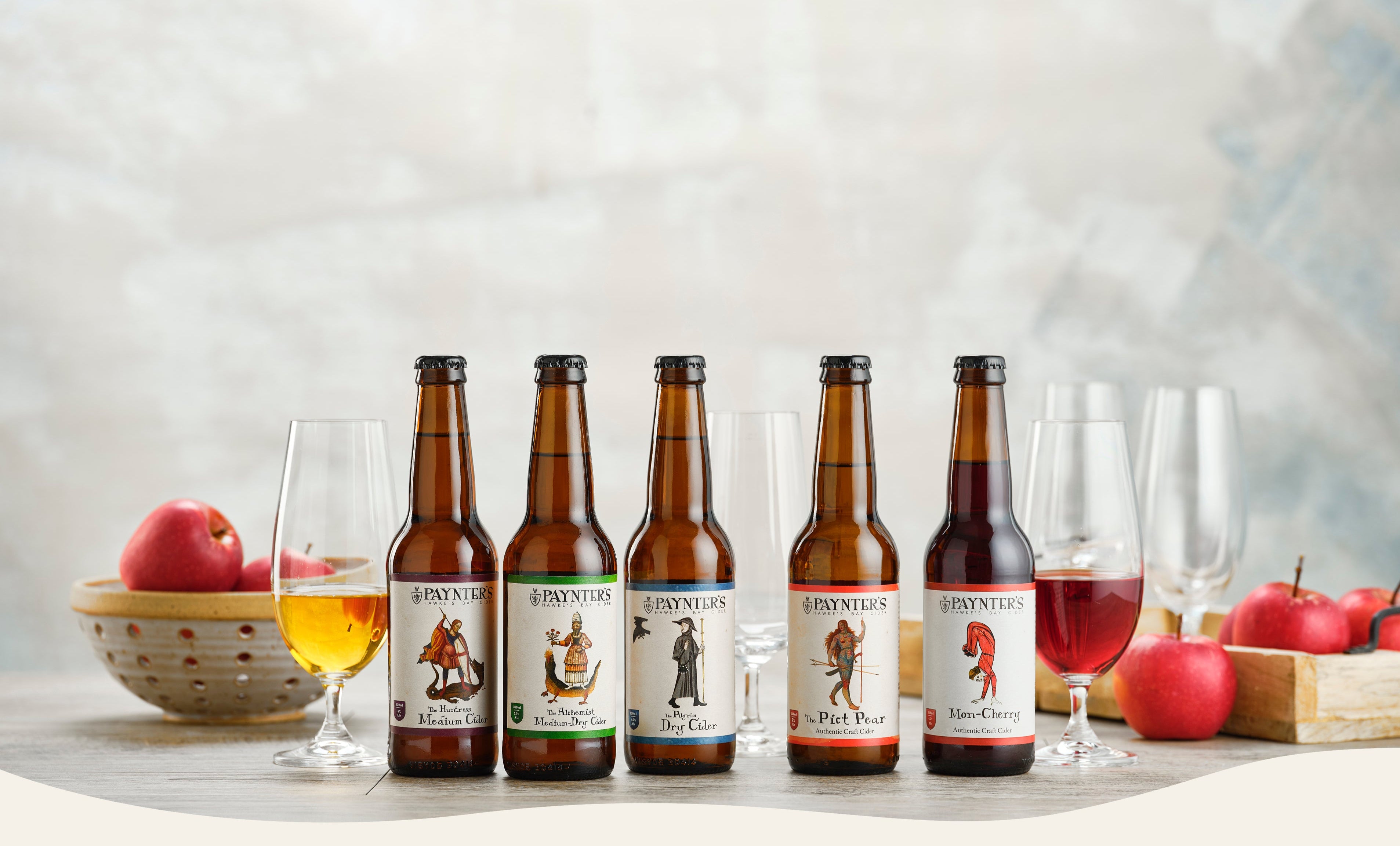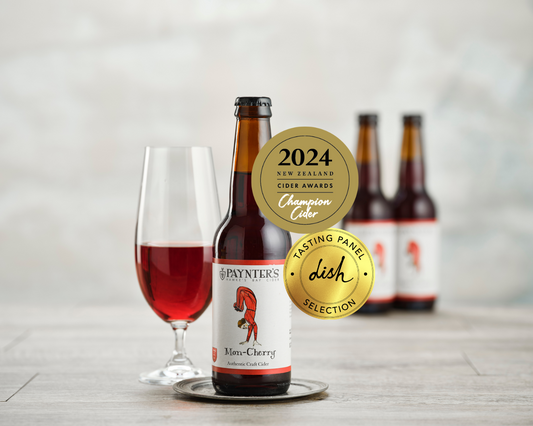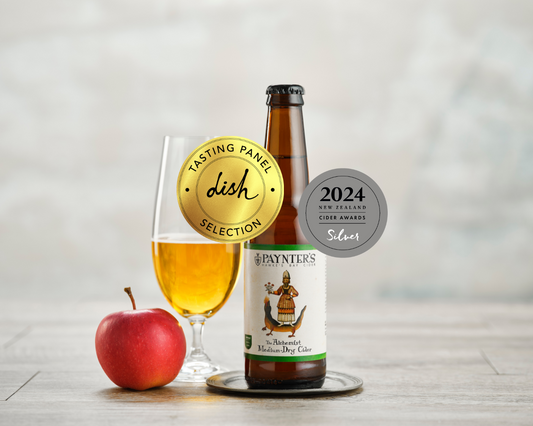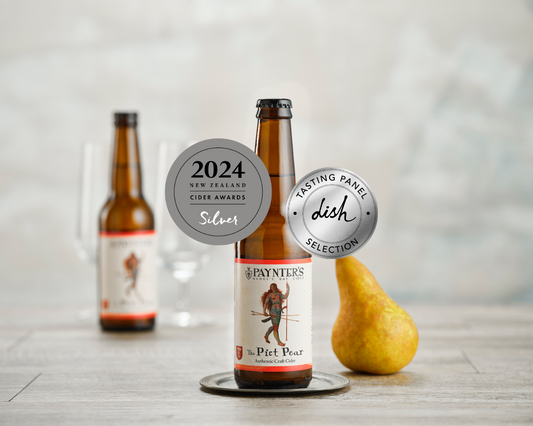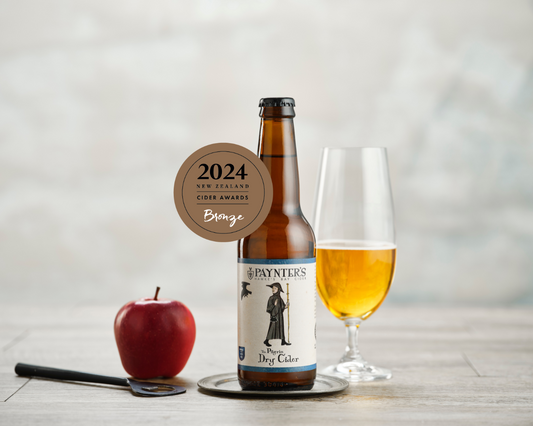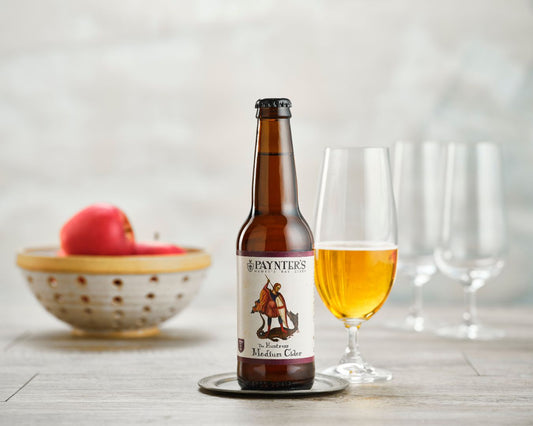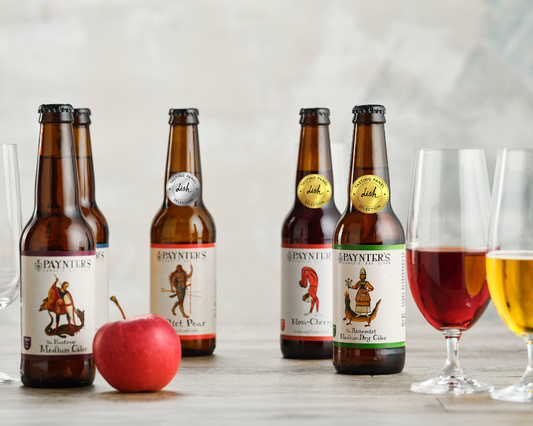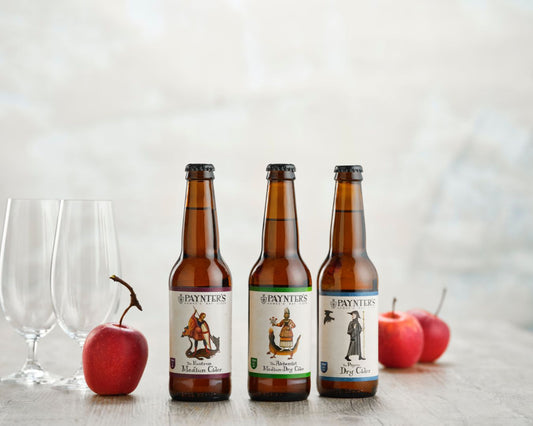Our Cider
We use proper cider apples. The bitter, knobbly, tannic kind bred for bold flavour (not the shiny supermarket stuff).
Our cider is sold by the case. Each single-variety case typically includes 24 × 330ml bottles of world-class cider, made from real cider apples. Prefer variety? Our mixed cases are also available in 12-packs.
-
Mon Cherry | Cider with Cherry
Regular price From $69.00 NZDRegular priceUnit price per -
The Alchemist | Medium/Dry
Regular price From $69.00 NZDRegular priceUnit price per -
The Pict Pear | Pear Cider
Regular price From $69.00 NZDRegular priceUnit price per -
The Pilgrim | Dry Cider
Regular price From $69.00 NZDRegular priceUnit price per -
The Huntress | Medium Cider
Regular price From $55.20 NZDRegular priceUnit price per$69.00 NZDSale price From $55.20 NZDSale -
2025 Dish Panel Picks | Mixed Case (12 or 24)
Regular price From $69.00 NZDRegular priceUnit price per -
Apples Only | Mixed Case (12 or 24)
Regular price From $69.00 NZDRegular priceUnit price per -
Yin & Yang | Mixed Case (12 or 24)
Regular price From $69.00 NZDRegular priceUnit price per
We're not your average cider company. But then again, we never wanted to be.
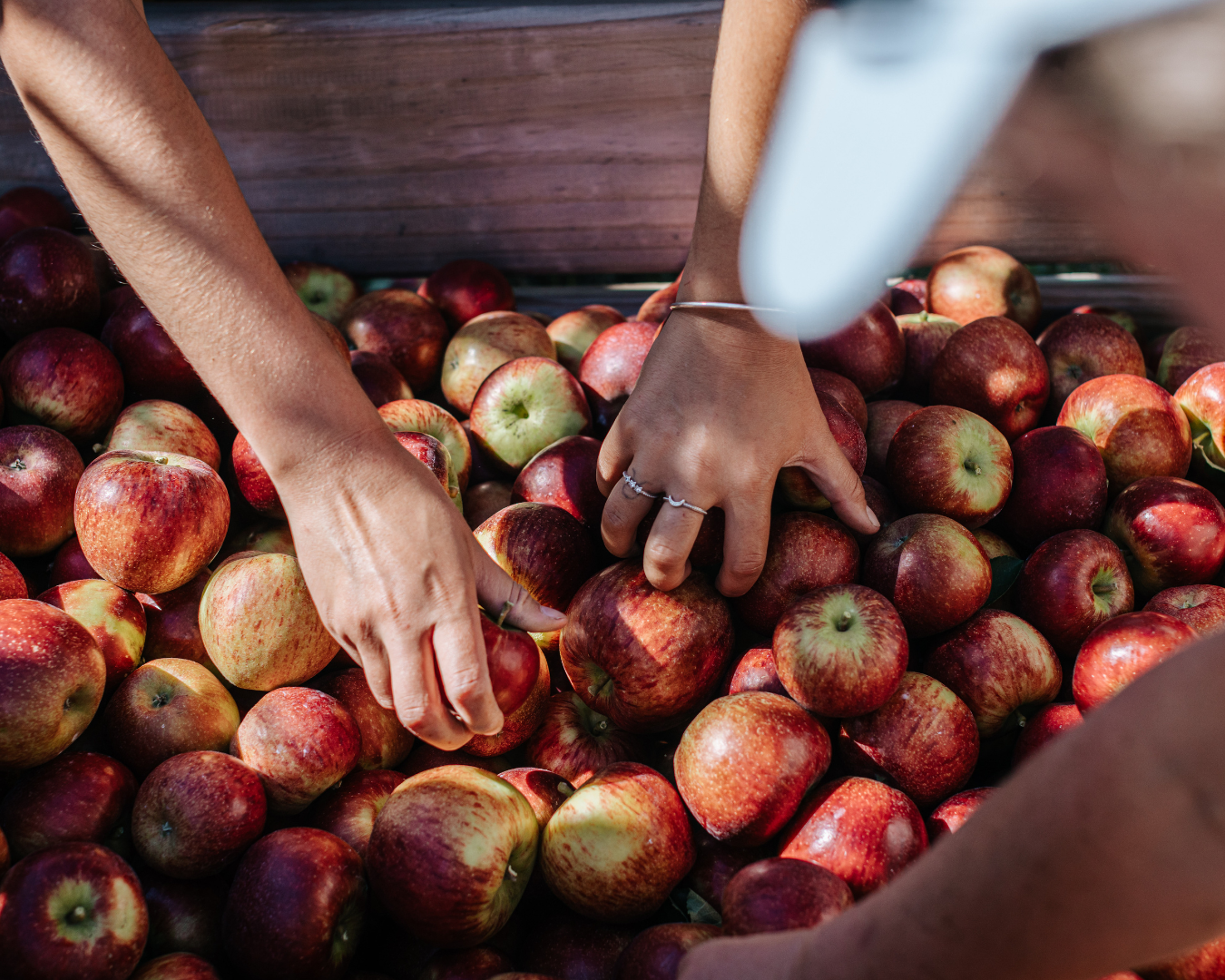
From Orchard to Bottle - No Shortcuts
We started in the orchard with a stubborn belief that good cider begins on the tree - not in the lab.
Every batch has a bit of tradition, a bit of mischief, and not a drop of nonsense.

